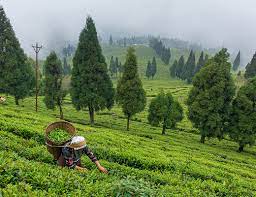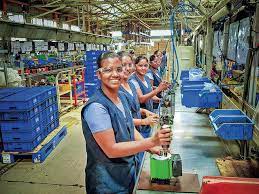The Khadi and Village Industries Commission (KVIC), in a first of its kind initiative has begun exploring the untapped but highly profitable venture of sandalwood and bamboo tree plantation for monetization of its assets. Seeking to encourage commercial plantation of sandalwood and bamboo, the KVIC has begun a drive with plantation of 500 saplings each of sandalwood and bamboo at its Nashik training center spread over 262 acres of land.
Union Minister for MSME, Shri Nitin Gadkari has lauded the initiative of KVIC.
KVIC has procured sandalwood saplings from Fragrance and Flavour Development Centre (FFDC) Kannauj, a unit of the Ministry of MSME, in Uttar Pradesh and Bamboo saplings from Assam. Plantation ceremony was launched through video-conference by KVIC Chairman, Shri Vinai Kumar Saxena yesterday.
The plantation of the Sandalwood has also been planned with an eye on creating an asset for the KVIC as it is estimated to fetch between Rs 50 crore to Rs 60 crore in the next 10 to 15 years. A sandalwood tree matures in 10 to 15 years and as per the current rate, sells at Rs 10 lakh to Rs 12 lakh each.
Likewise, a special variety of bamboo, Bambusa Tulda, used for making Agarbatti sticks, brought from Assam has been planted in Maharashtra with an aim to support the local Agarbatti industry and to create regular income for the training center.
One bamboo plant gets ready for harvesting in the third year. Each matured log of bamboo, weighing approximately 25 kg, sells at an average of Rs 5 per kg. At this rate, one matured log of bamboo fetches nearly Rs 125. The bamboo plant has a unique quality. Each bamboo plant, after the third year, produces minimum 5 logs and thereafter, the production of bamboo logs doubles every year. This means, the 500 bamboo saplings will provide at least 2500 bamboo logs in the third year and will generate an additional income of nearly Rs 3.25 lakh to the institution which will grow every year by nearly two-times.
Further, in terms of quantity, 2500 bamboo logs will weigh approximately 65 MT of bamboo that will be used for making Agarbatti sticks and thus create large-scale local employment.
In the last few months, KVIC has planted nearly 2500 trees of Bambusa Tulda in different parts of India. 500 saplings of Bambusa Tulda have been planted in each of the cities like Delhi, Varanasi and Kannauj apart from the latest plantation in Nashik to ensure local availability of raw material for Agarbatti manufacturers at a reasonable cost.
“Plantation of sandalwood and bamboo trees on vacant land aims at monetization of the property. At the same time, it will serve the dual purpose of meeting the huge global demand of Sandalwood while Bamboo plantation will support the local Agarbatti manufacturers in the light of recent decision taken by the Central government to make India ‘Aatmanirbhar’ in Agarbatti making,” KVIC Chairman, Shri Vinai Kumar Saxena said. “We are identifying more such properties of KVIC across the country where such plantations can be launched,” Saxena said, adding if the farmers start planting just two sandalwood trees in their fields, they will be economically self-dependent to meet any financial eventuality.
Plantation of sandalwood trees has high potential in the export market as well. Sandalwood and its oil have high demand in countries like China, Japan, Taiwan, Australia and the USA. However, there is a short-supply of sandalwood and hence a great opportunity for India to increase sandalwood plantation and occupy the position of a global leader in sandalwood production.
 Indian Industry Plus A Pratisrutiplus Suppliment
Indian Industry Plus A Pratisrutiplus Suppliment















